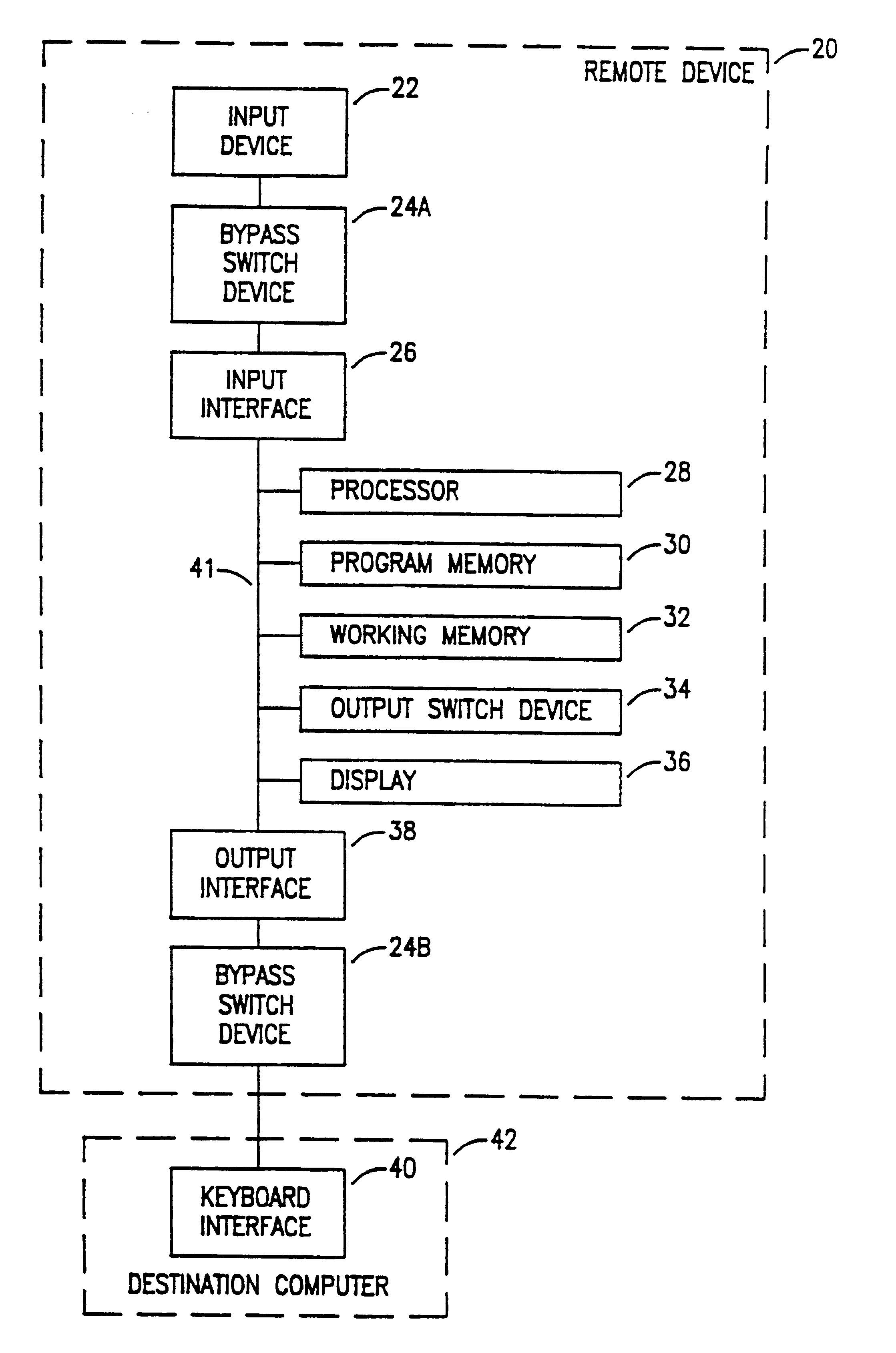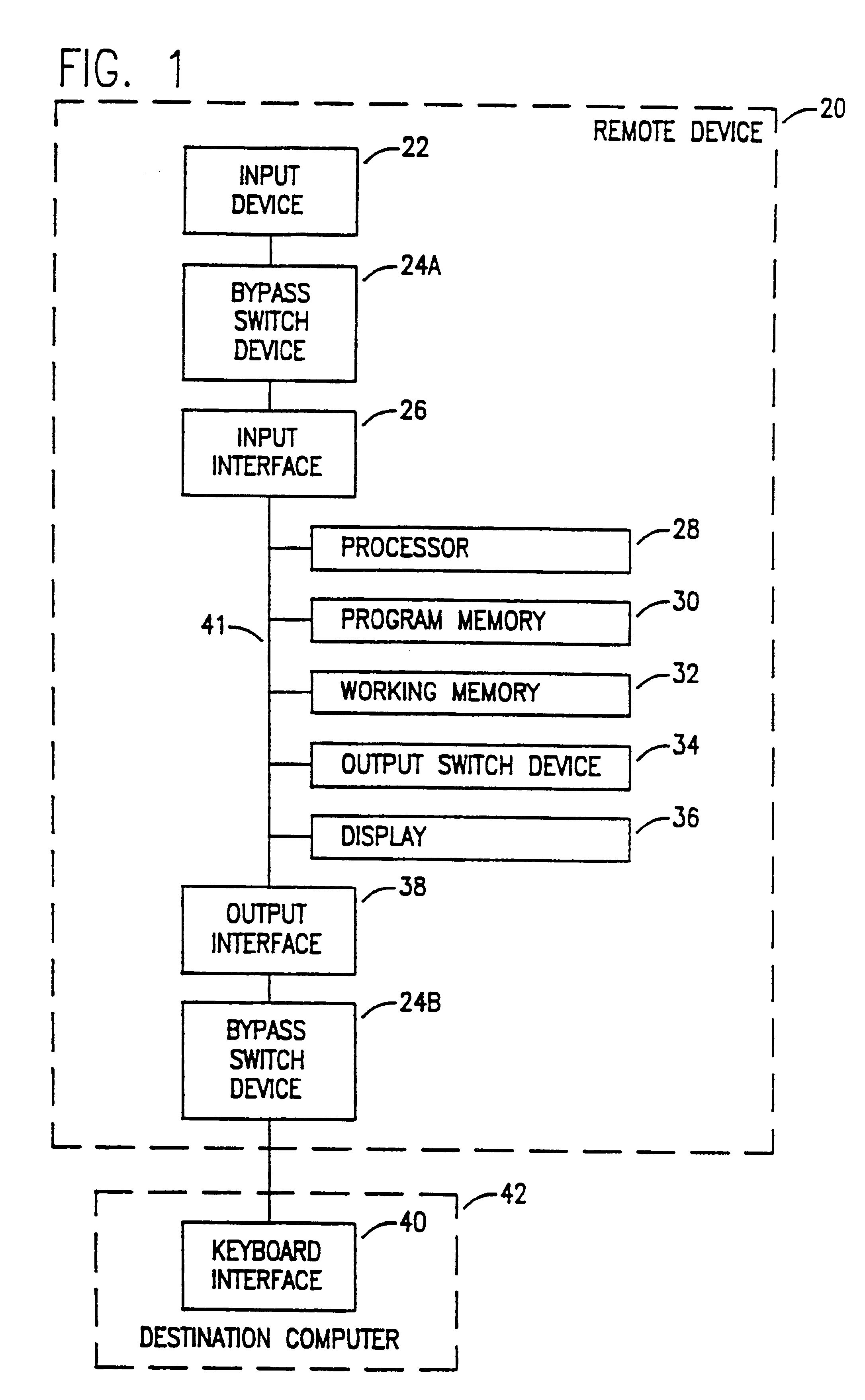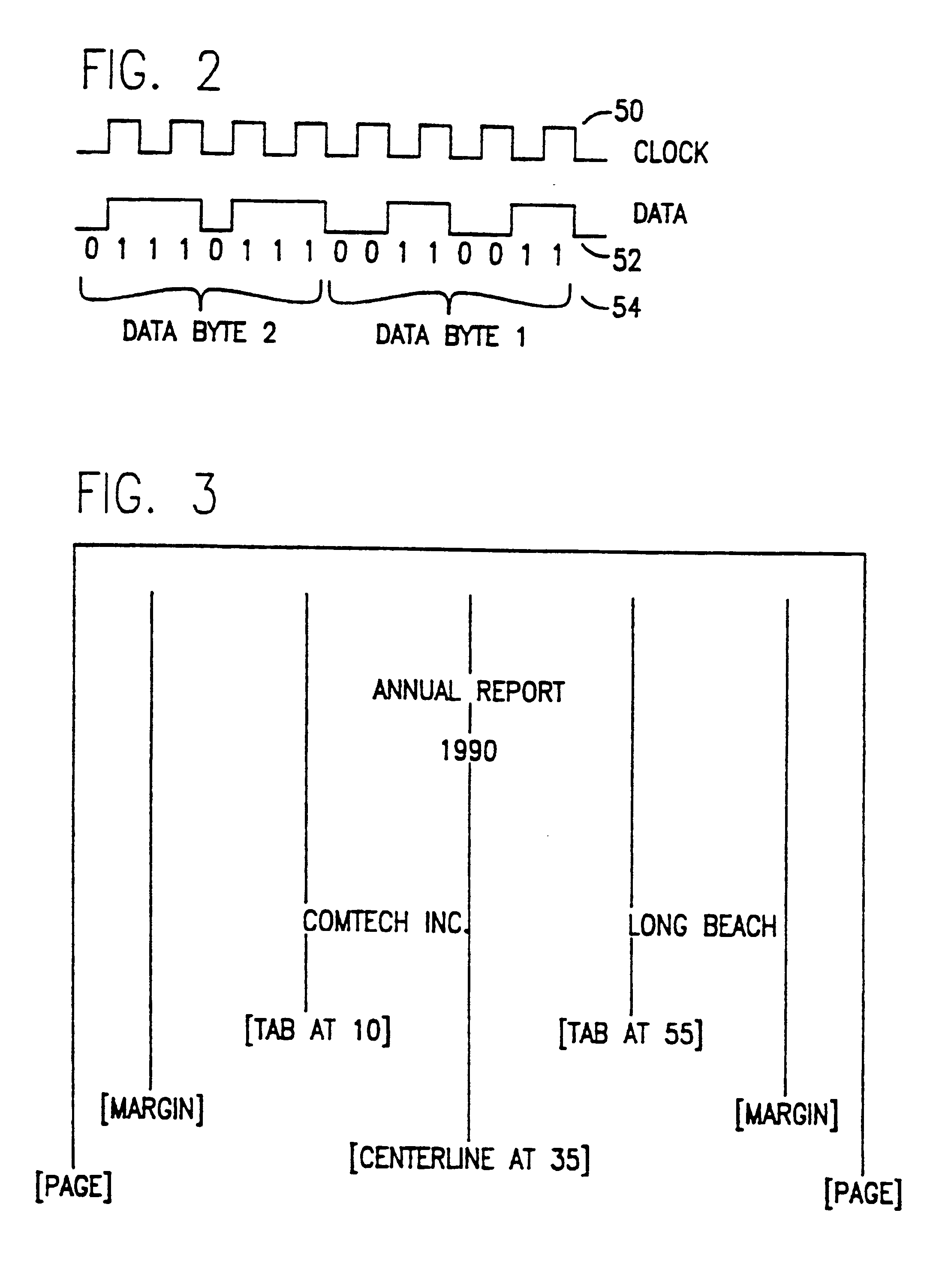Portable data storage and editing device
a data storage and editing device technology, applied in the field of methods and apparatus of data storage and transfer, can solve the problems of incompatibility of floppy diskettes, inability to provide truly effective data transfer methods, and often require considerable manual dexterity, and achieves convenient and inexpensive manner, simple and identifiable cable, and easy recognition and understanding by computer users.
- Summary
- Abstract
- Description
- Claims
- Application Information
AI Technical Summary
Benefits of technology
Problems solved by technology
Method used
Image
Examples
Embodiment Construction
FIG. 1 is a schematic circuit diagram of a remote device 20 embodying a portable data storage and editing device according to the invention. Remote device 20 includes an input device 22, an input interface 26, a processor 28, a program memory 30, a working memory 32, an output switch device 34, a display 36, and an output interface 38. The output interface 38 is plug-connected to a keyboard interface 40 of a destination computer 42 via a cable.
Advantageously, the port for keyboard interface 40 is easily recognized by a user and connection thereto may be had by use of an inexpensive cable. This port is often located at the front of the computer where it is very accessible. This port usually has its own interrupt to the processor of the destination computer. Utilization of this port for communication between devices and destination computer 42 eliminates the need for installation of any specialized communication software or hardware on the destination computer. In accordance with the ...
PUM
 Login to View More
Login to View More Abstract
Description
Claims
Application Information
 Login to View More
Login to View More - R&D
- Intellectual Property
- Life Sciences
- Materials
- Tech Scout
- Unparalleled Data Quality
- Higher Quality Content
- 60% Fewer Hallucinations
Browse by: Latest US Patents, China's latest patents, Technical Efficacy Thesaurus, Application Domain, Technology Topic, Popular Technical Reports.
© 2025 PatSnap. All rights reserved.Legal|Privacy policy|Modern Slavery Act Transparency Statement|Sitemap|About US| Contact US: help@patsnap.com



